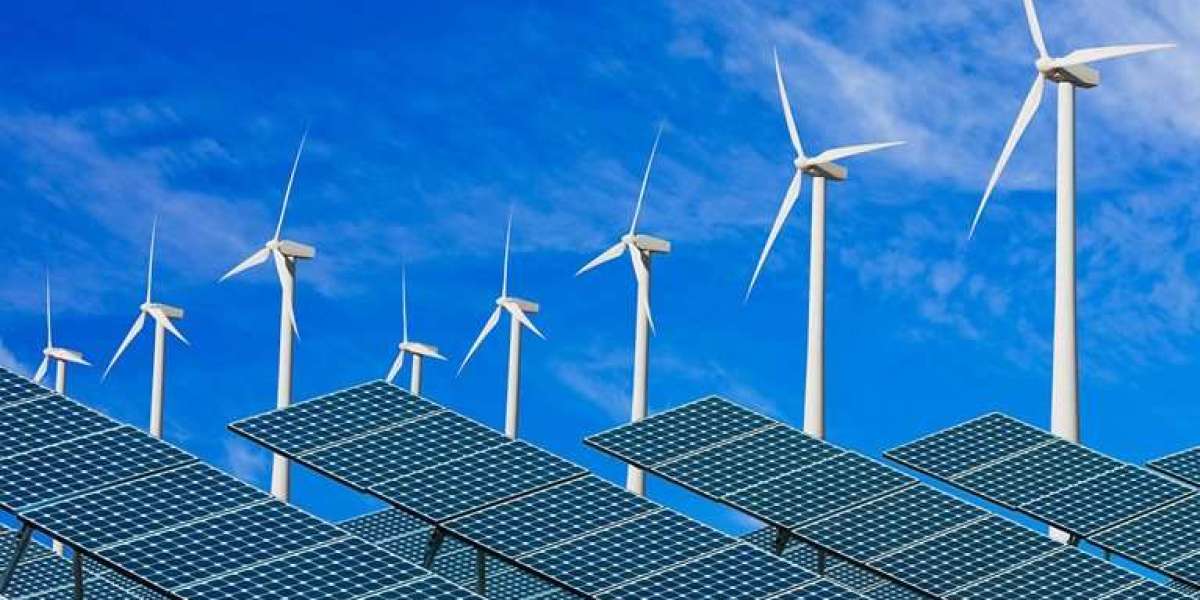The Imperative for Change
The burning of fossil fuels has long been the backbone of global energy production. However, this reliance comes at a considerable cost. Carbon dioxide and other greenhouse gases released during combustion contribute significantly to global warming and climate change. The consequences are dire, with rising sea levels, extreme weather events, and ecosystem disruptions becoming increasingly common.
Recognizing these threats, governments, businesses, and individuals worldwide are embracing the imperative for change. The shift towards clean energy solutions is no longer just a moral choice; it's an economic and strategic necessity. Renewable energy sources such as solar, wind, hydro, and geothermal power offer a sustainable alternative, with the potential to reduce greenhouse gas emissions while meeting growing energy demands.
Harnessing the Power of the Sun
Solar energy stands out as one of the most abundant and promising clean energy solutions available today. With advancements in photovoltaic technology and falling costs of solar panels, harnessing the power of the sun has become increasingly accessible. From residential rooftops to vast solar farms, solar energy installations are proliferating worldwide.
One of the key advantages of solar energy is its scalability. Whether powering a single home or an entire city, solar installations can be tailored to meet specific energy needs. Moreover, solar panels have a minimal environmental footprint compared to fossil fuel extraction and combustion, making them a vital component of the transition to sustainable energy practices.
Wind Energy: Riding the Air Currents
Another cornerstone of clean energy solutions is wind power. Harnessing the kinetic energy of wind through turbines, wind farms have emerged as a viable alternative to traditional fossil fuel-based electricity generation. Countries with ample wind resources, such as Denmark and Germany, have made significant strides in incorporating wind energy into their power grids.
The appeal of wind energy lies in its abundance and renewability. Unlike finite fossil fuel reserves, wind is a perpetual resource, driven by natural atmospheric phenomena. With ongoing innovations in turbine design and efficiency, the cost competitiveness of wind power continues to improve, further accelerating its adoption worldwide.
Tapping into Earth's Energy Reserves
Beyond solar and wind, hydro and geothermal power offer additional clean energy solutions with immense potential. Hydroelectric dams harness the energy of flowing water to generate electricity, providing a reliable source of renewable power. While concerns exist regarding the environmental impact of large-scale dams, ongoing research seeks to minimize their footprint and maximize their efficiency.
Geothermal energy, meanwhile, taps into the heat stored beneath the Earth's surface. By drilling deep wells and harnessing steam or hot water, geothermal power plants can generate electricity with minimal greenhouse gas emissions. While geothermal resources are geographically limited, advancements in drilling technology hold promise for expanding their reach and viability.
Overcoming Challenges on the Path to Sustainability
Despite the promise of clean energy solutions, transitioning away from fossil fuels is not without its challenges. One of the primary obstacles is the entrenched infrastructure and vested interests associated with the fossil fuel industry. Oil, gas, and coal companies wield considerable political and economic influence, hindering efforts to enact meaningful policy changes and investments in renewables.
Moreover, the intermittent nature of renewable energy sources presents logistical and technical hurdles for grid integration. Unlike fossil fuel power plants, which can ramp up or down to meet fluctuating demand, solar and wind energy generation is contingent on weather conditions. Thus, effective energy storage and grid management systems are essential for ensuring a reliable and resilient clean energy transition.
The Role of Innovation and Collaboration
Addressing these challenges requires a concerted effort from governments, businesses, and civil society. Innovation plays a crucial role in driving down the costs of clean energy technologies and enhancing their efficiency and reliability. Research and development investments in areas such as energy storage, smart grids, and carbon capture and storage are critical for accelerating the transition to sustainable energy practices.
Furthermore, international collaboration and partnerships are essential for scaling up clean energy deployment and sharing best practices. Initiatives like the Paris Agreement and the United Nations Sustainable Development Goals provide frameworks for collective action on climate change and sustainable development. By working together, nations can leverage their respective strengths and resources to achieve common objectives.
Conclusion
In conclusion, the transition from fossil fuels to clean energy solutions is imperative for safeguarding the planet and securing a sustainable future. By harnessing the power of renewable resources such as solar, wind, hydro, and geothermal energy, we can reduce greenhouse gas emissions, mitigate climate change, and create a more resilient and equitable energy system.
However, this transition will require bold leadership, innovation, and collaboration on a global scale. Governments must enact supportive policies and incentives to accelerate the adoption of clean energy technologies, while businesses and investors must allocate resources towards sustainable ventures. As individuals, we can also contribute by making conscious choices to reduce our energy consumption and support renewable energy initiatives in our communities.
In the journey from fossil to clean, there are challenges to overcome and obstacles to navigate. Yet, the path forward is clear: by embracing clean energy solutions and prioritizing sustainability, we can build a brighter, greener future for generations to come.
Frequently Asked Question
What Are Clean Energy Solutions?
Clean energy solutions refer to renewable and sustainable sources of energy that produce minimal or no greenhouse gas emissions during generation. These include solar, wind, hydroelectric, geothermal, and biomass energy technologies. Unlike fossil fuels, which contribute to climate change and environmental degradation, clean energy sources offer a more sustainable and environmentally friendly alternative.
Why Is Transitioning To Clean Energy Important?
Transitioning to clean energy is crucial for several reasons. First, it helps reduce greenhouse gas emissions, mitigating the impacts of climate change and global warming. Second, it reduces reliance on finite and polluting fossil fuel reserves, enhancing energy security and independence. Lastly, clean energy promotes economic growth and job creation in the renewable energy sector, fostering innovation and technological advancement.
How Do Clean Energy Solutions Compared To Fossil Fuels In Terms Of Cost?
The cost of clean energy technologies, such as solar and wind power, has been steadily declining in recent years, making them increasingly competitive with fossil fuels. While the initial investment for renewable energy installations can be higher, the long-term operational and maintenance costs are often lower. Additionally, as economies of scale and technological advancements continue to drive down costs, clean energy is becoming more affordable and accessible.







